Terfenol-D Design and Build Capabilities
The engineers of Active Signal Technologies are pioneers in the development of novel approaches to implementing the high strain capabilities of Terfenol-D in practical applications. Terfenol-D is often dismissed by designers due to its magnetic drive requirements, mechanical and magnetic biasing requirements, low permeability aggravating magnetic circuit design, and properties that change with prestress. However, Terfenol-D remains a very attractive material to Active Signal engineers who have found ways to address these issues. We began implementing Terfenol-D based designs in 1981 with the first underwater transducer to use permanent magnet biasing. Active Signal then designed a general purpose actuator for Etrema, and recently implemented Terfenol-D in high energy, high frequency, hydraulic valve and pump designs.
Actuators:
The first practical general purpose Terfenol-D actuator was designed and built for Etrema as a way for engineers to test this material in their designs without having to learn the intricacies of biasing, prestress, etc. It is a very simple design, shown in Figure 1 that remains in our Terfenol-D ‘museum’. It uses a closed magnetic circuit with Alnico as the biasing magnet and is quite effective as a demonstration device. Using this device as a starting point, the designer can implement the principles of a Terfenol-D design for his own application as some of the examples below will show.
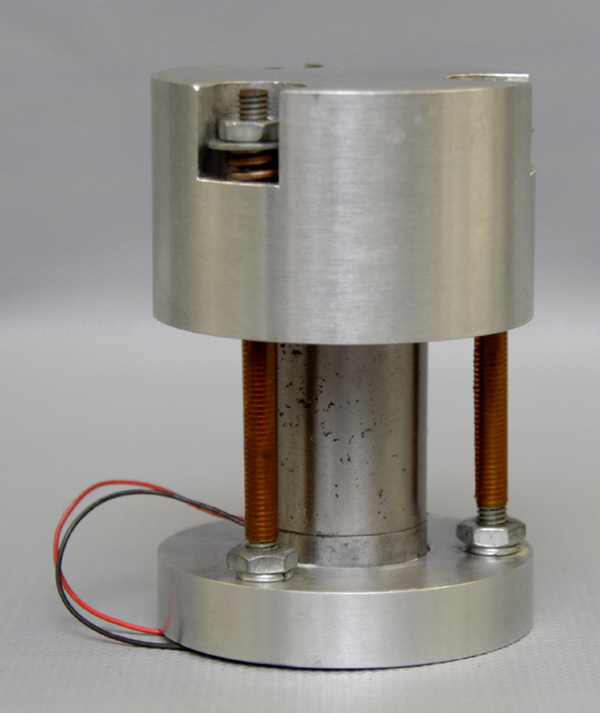
Figure 1. Original Terfenol-D Actuator
Transducers:
A popular use of Terfenol-D is that of a under water transducer driver material due to its high energy density and broad bandwidth capability. With its strain being ~ 3 times that of PZT8, a standard underwater transducer material, the material originally had to be shown to operate at great depths to be useful for ASW, surveillance, and oceanographic applications. This is a special challenge since Terfenol-D is a relatively ‘soft’ material with an Elastic Modulus of ~ 3 x 10E6 psi increasing the imperative that any depth compensation system be quite compliant, even at deep depths. The Active Signal engineers addressed this challenge by being the first to build a 21” ring device using only passive compensation that operated to 1000 ft with less than 1 dB loss in performance as a function of depth. We subsequently built several such devices for Noise Augmentation (NAU) applications. Other applications evolved, including those for oceanography and surveillance. An example of a depth compensated high power low frequency Terfenol-D transducer is shown in Figure 2.
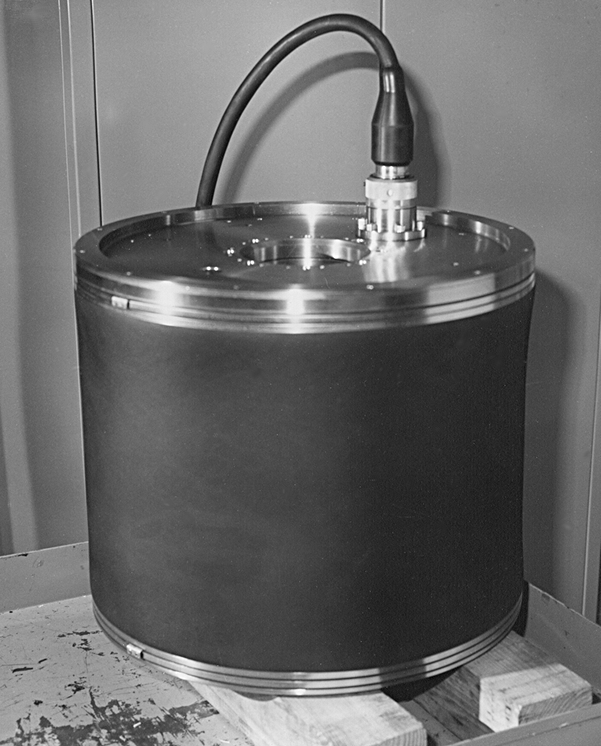
Figure 2. 18” Depth Compensated Terfenol-D Ring Transducer built by Active Signal Engineers
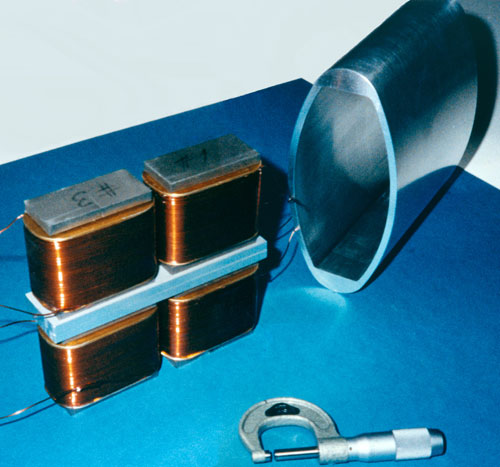
Terfenol-D Driver Assembly for Flextensional Under Water Acoustic Transducer
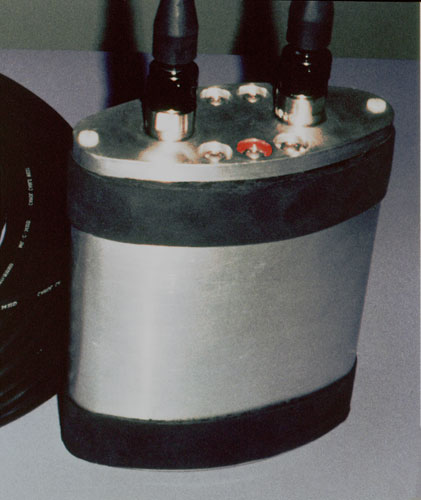
Completed Terfenol-D Flextensional Transducer
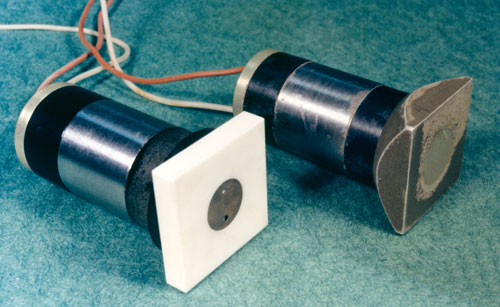
Example of Terfenol-D Tonpilz drivers for Acoustic Transducers
Figure 3. Terfenol-D driven Down Hole Acoustic Transducer used in Oil Exploration
The transducer in Figure 3 is designed for use as a down hole acoustic transducer which is used in oil exploration. The operating conditions can be very harsh in this environment and the wide operational temperature range of Terfenol-D gives it an advantage in high power, high temperature, applications such as this. This device was developed to demonstrate the capability to operate at pressures up to 20,000 psi and at temperatures up to 200°C.
Specifications:
Diameter: 3.5", Height: 5", Weight: 2 lbs, Max Operating Pressure: 20,000 psi, Max Operating Temperature: 200°C, Max Acoustic Output: 182dB @ 5 kHz, Bandwidth: 1 - 10kHz
The output power (SPL) of this device is limited by the size of the Terfenol-D rods in it and units within very much the same envelope can be constructed with higher output power ratings.
Hydraulics:
Clearly, an attractive application of Terfenol-D is that of a hydraulic valve driver, i.e. to take the place of a pilot stage or even as a direct drive source for a second stage. The Active Signal engineers began this effort with a proof of principle high speed, direct drive hydraulic valve prototype shown in Figure 4
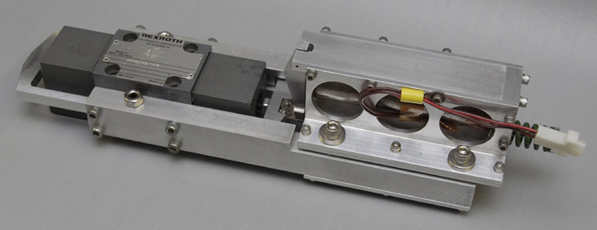
Figure 4. Proof of Principle Terfenol-D Valve design
Once again, the high strain of Terfenol-D is employed along with a mechanical amplifier as a demonstration device, thus with little regard to form factor. This device develops 0.012” valve deflection and can operate over a frequency range of zero to above 1 kHz. Since the time when this prototype was built, we have used Terfenol-D in a high frequency (3 kHz) high power pump design (Figure 5). The Terfenol-D driver in this design, based on empirical measurements of force and velocity versus electrical power input, achieved 60% electromechanical coupling which is approximately equal to the intrinsic value for the material. This pump was developed in cooperation with Moog as part of the DARPA Compact Hybrid Actuator Program (CHAP) and continues our joint effort with Moog in developing hydraulic applications for Terfenol-D. This pump was featured in an article by Design News magazine and also in an article published by National Instruments.
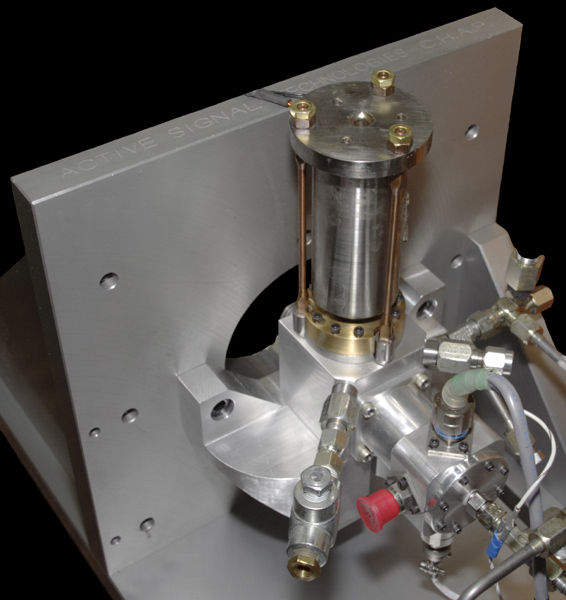
Figure 5. Terfenol-D driven hydraulic pump
And Your Application….
Active Signal has a long history in Terfenol-D device design and build capability, including every stage from concept through magnetic and mechanical design and final device development that takes maximum advantage of the low Q and high deflection capability of the material. Active Signal will be pleased to discuss your application and aid in its development based on our 25+ years experience in the field allowing rapid feasibility assessment and prototype design assistance.
